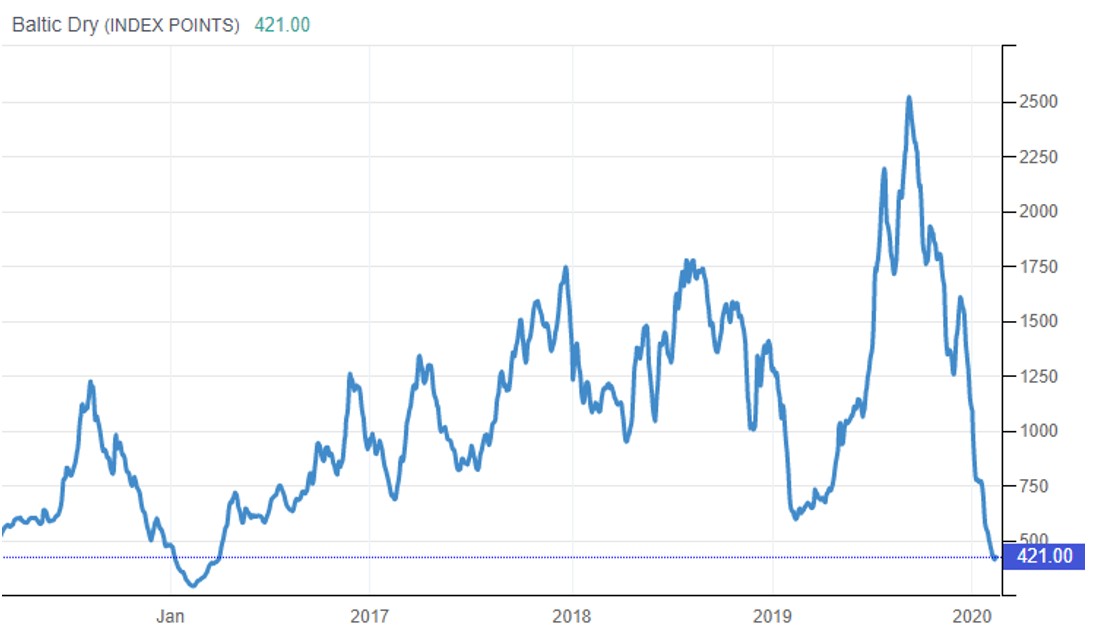Another day, another story on the coronavirus.
I’ll be honest, I hadn’t planned on talking about the bug today.
Initially I set out to attack the blind optimism coming from our central bankers.
Over coffee and reading the morning news, I too got sucked back into the virus vortex.
The good news is, a central banking takedown can wait for another day…that will probably give ‘em more of a chance to say a few silly things for me to pull apart later on.
Instead, I think we need to talk.
We need to start looking at the markets, and perhaps just how disconnected they are from reality.
You see, I fear investors are looking at all the wrong clues…
Coronavirus to trigger a monetary reset?
I was a young adult when the SARS virus hit in 2002.
Aside from a family member who worked in the Shenzhen province of China at the time, it didn’t really register.
Sure it was newsworthy. And most likely a little frightening for those close to the centre.
But the impact in Australia was limited to some headlines on the nightly news (remember when watching that was a thing?).
Thanks to our perpetual links to information and the interconnectedness of global economies, it’s different this time.
A financial panic hasn’t hit…yet. Nonetheless, what if there was some sort of trigger that forced a shuttering of banks? And by that I don’t just mean banks closing, I’m talking about a full sort of monetary ‘reset’. One where your money is stuck in the bank….and you’re on the outside — cashless — wondering what to do next while politicians decide the fate of money?
Jim Rickard says this is entirely possible. His latest book Aftermath talks you through how elites could use a panic to set up a new monetary ‘reset’.
Click here to read about Reset 2020, and see what it could mean for you.
[conversion type=”in_post”]
Aussie market acts like nothing has happened
The coronavirus is back in the headlines. Some editorial I read overnight called it ‘China’s Chernobyl moment’.
In other words, this is the trigger that sees the iron grip on the country loosen…before falling apart all together.
This is beginning to call into question Big Xi’s vice-like grip on the country.
He’s been largely absent from public view since the virus unravelled.
Which, from a leader that promises prosperity to his people, is a bad PR move if you want to keep your 1.3 billion people from rioting.
But not all investors seemed concerned.
The US market was down marginally overnight. And since the virus was first discovered in the middle of December, major indices in the US continue to march on to new highs.
It’s a similar story with the Aussie markets. The XJO is only a few points from its all-time high in January.
The market continues to ignore the coronavirus.
It reminds me of a Monty Python skit where the knight declares his recently chopped off limbs are just a flesh wound.
The thing is, investors would probably do better if they ignored the market…and looked at the signals coming from commodities.
Stocks might look fine — everything else does not
You have to ask yourself this: just how are investors shaking this off, when things happening in the background look bleak?
Take this for example.
Large sections of China are closed. Ports are closed. Airports are closed. Trains are closed. Major manufacturing hubs are frozen. Large masses of people can’t leave the country. Schools are closed. Fast food joints and restaurants are shut.
Trading rooms have almost no one in them.
Yuan transactions have halved, says Bloomberg. Adding that Chinese FX and bond traders are stuck at home, working remotely where possible.
Yet the markets are glossing over the labour capital of the world having multiple weeks of downtime.
It’s time I reckon investors need to start looking at commodities…
The values of copper, iron ore, soybeans, wheat, and cotton are all down between 4.7–9.3% in the past four weeks, when official news said the virus was starting to spread…
Energy has taken a big hit. In the same time, Brent crude and natural gas have fallen 18% and 17% respectively.
Yet the Baltic Dry Index tells us who the biggest loser is…
Baltic Dry Index 2015–20
|
|
| Source: Trading Economics |
The Baltic Dry Index — the tool that measures shipping of bulk goods — has plunged to levels not seen since Jan 2016.
More importantly, note that the BDI has dived 72% since early December…before the virus officially existed.
In fact at these levels, it takes the BDI dangerously close to a pre-globalised point of trading. Lows not regularly seen since 1986.
It’s a rough tool, but the BDI gives us an indication about the future of trade. And that tumbled more than five weeks before the value of commodities did.
But one look at stock markets indices around the world, and it appears investors aren’t looking at what things are happening in the background.
Rather than take your cues from the market, perhaps look at the value of goods that make up the things we buy.
That will give you a better idea of how the coronavirus is impacting the markets.
| Until next time, |
| Shae Russell, PS: Discover how some investors are preserving their wealth and even making a profit, as the economy tanks. Download your FREE report by clicking here. |



Comments